Last week I celebrated the first anniversary of Gymbits! I thought I would mark the occasion by picking out some of my favourite photos that I’ve collected throughout the years. I originally wanted to do a Top 10, but I simply couldn’t narrow it down. So here are 29 of my favourite pictures!
Shun Fujimoto (JPN) poured his heart and soul into the team competition at the 1976 Olympic Games, concealing his fractured kneecap while earning a 9.7 on Rings. Japan would not have won the gold medal without his clutch performances.
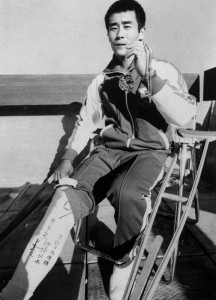
Olga Korbut (URS) was the first gymnast with the acrobatic style that epitomizes the sport today. She captured hearts with her smiles and her tears at the 1972 Olympic Games.
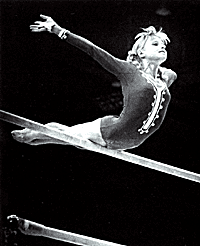
Four years later, Nadia Comaneci (ROM) showed that she was perfection personified with her seven Perfect 10s. Korbut and Comaneci put gymnastics in the spotlight at the 1976 Olympics, and it has been a main event at the Olympic Games ever since.

Korbut looks on as Comaneci’s score of 10.0 registers on the scoreboard as a 1.00.
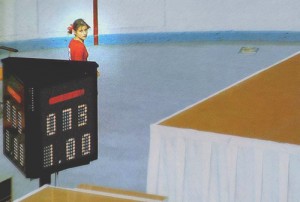
Yelena Mukhina (URS) continues the string of Soviet dominance by winning the 1978 World Championships…but at what cost?
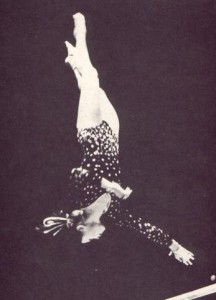
Svetlana Boginskaya’s career spanned three Olympic Games where she represented the Soviet Union, the Unified Team and Belarus. This gymnast is remembered for her unique style and her passion for the sport.
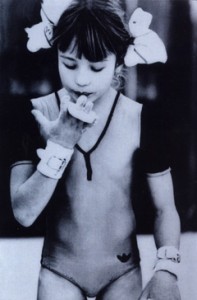
The classic Romanian style was demonstrated by their stars of the 1980s, Daniela Silivas (shown) and Aurelia Dobre.
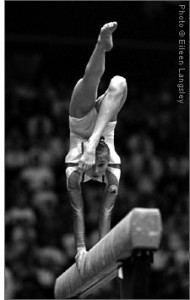
Some of the most difficult skills of the 1980s were performed by Tatiana Groshkova. Groshkova, Natalia Frolova and Lyudmila Stovbchataya highlight the depth of the Soviet team, as these excellent gymnasts never managed to represent their country at a World Championships or Olympic Games.
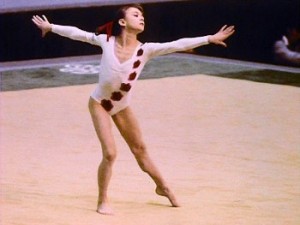
Yang Bo (CHN) demonstrates exquisite form on her signature skill on the balance beam. A very similar photo appeared on the cover of the book released by the FIG, Gymnastics: The Art of Sport.
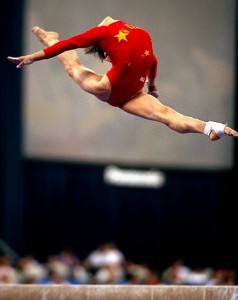
Vitaly Scherbo (CIS) was the Michael Phelps of the 1992 Olympic Games, winning 6 gold medals. At the following Games, he won 4 bronze medals.
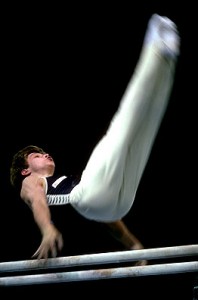
Lilia Podkopayeva (UKR) is one of my favourite gymnasts ever. The 1996 Olympic all-around champion combined perfect form with tricky skills. I chose this photo because I was fortunate enough to be present when it was captured.
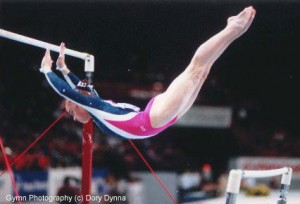
I like this photo of Dina Kochetkova (RUS) because of the colours, lighting and angles. I really miss the Fab Four of the mid-1990s: Kochetkova, Svetlana Khorkina, Yelena Grosheva and Oksana Fabrichnova.

Yelena Zamolodchikova (RUS) had a gymnastics career that spanned many years, and she had an excellent fighting attitude and accepted her role as a leader for younger teammates. She is particularly known for her vaulting.
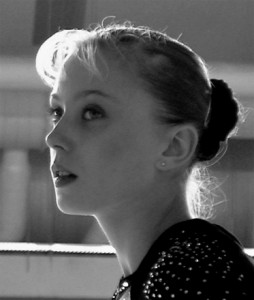
No photo compilation would be complete without The Queen, Svetlana Khorkina (RUS). Her elegance and her innovative skills allowed her to win 3 all-around titles at the World Championships.
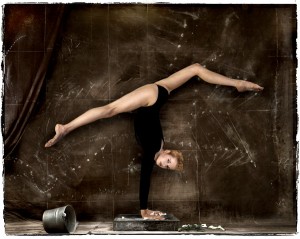
This photo captures Americans Nastia Liukin and Chellsie Memmel as they realize they have tied for the top spot at the 2005 World Championships. You can tell by the expressions on their faces which gymnast was relegated to all-around silver due to a mathematical rounding issue.
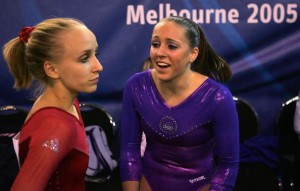
Despite the 2005 disappointment, Liukin went on to win the 2008 Olympic Games and ended up modelling for Max Azria.
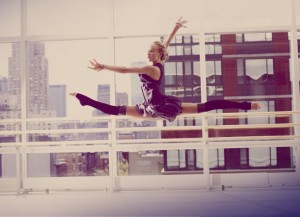
Li Ya (CHN) shows off unique skills on uneven bars.
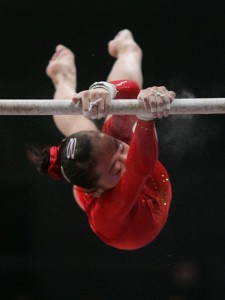
Pang Panpan (CHN) was not on the world stage nearly long enough, but she does feature in two fantastic photos.

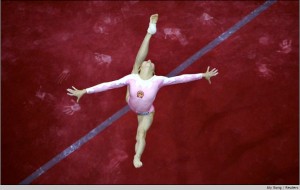
Liang Chow produced a well-rounded gymnast in Shawn Johnson (USA) while training significantly fewer hours than the competition. He seems like such a kind coach who truly wants the best for his athlete.
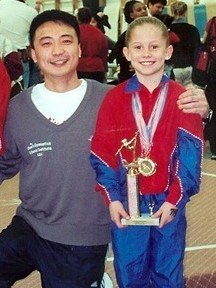
Johnson sports a leotard with her name in Chinese on the sleeve.
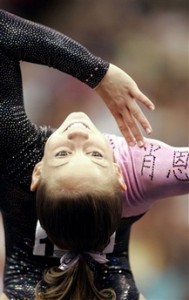
The stoic Yang Wei (CHN) lets loose with a wide grin after finally winning an all-around gold medal at the 2006 World Championships.
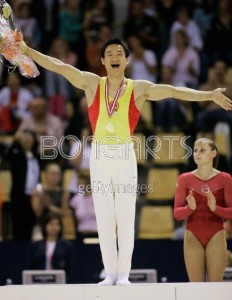
Yang’s team wins top honours in front of the hometown crowd at the 2008 Olympic Games. This team dominated the standings in almost every event.
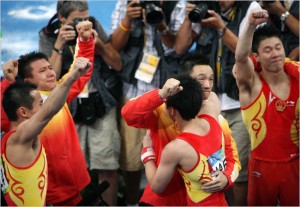
I love this photo of Anna Pavlova (RUS).
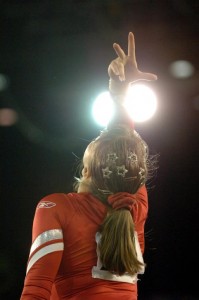
I was overjoyed to discover that the rumour was true: Li Ning (CHN) had indeed been selected as the athlete to light the Olympic Torch high above the Bird’s Nest in Beijing. It was an exciting moment as he “ran” around the stadium high in the air with the fiery torch. Li Ning, winner of 6 medals at the 1984 Olympic Games, is perhaps now best known as an entrepreneur for his sports apparel company.
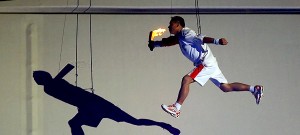
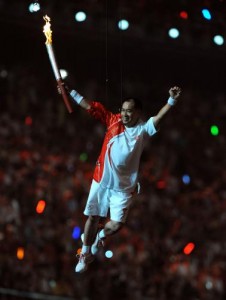
Other Chinese gymnasts who were part of the Opening Ceremony included Li Xiaoshuang, the 1996 Olympic All-Around Champion, and his Olympic teammate Huang Liping, who took the oath on behalf of all the judges and officials.
A Body Worlds 2 exhibit of a gymnast on rings.

Let’s end on a funny note! Kellie and aevera of GGMB posted many hilarious pictures following Kanye West’s outburst at the 2009 Video Music Awards. I’ll post two of my faves here.

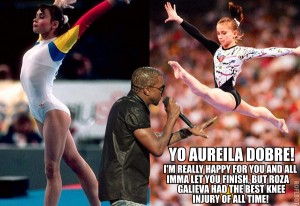
(I’m sorry I am unable to credit the photographers. Please tell me if you captured one of the photos and would like to receive credit.)






























